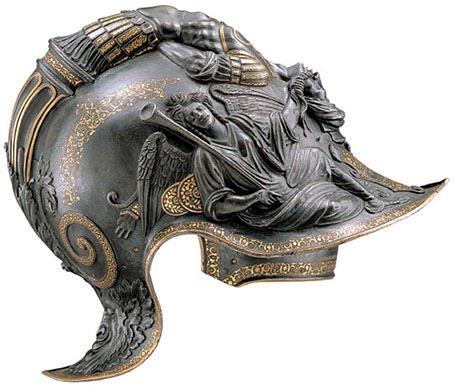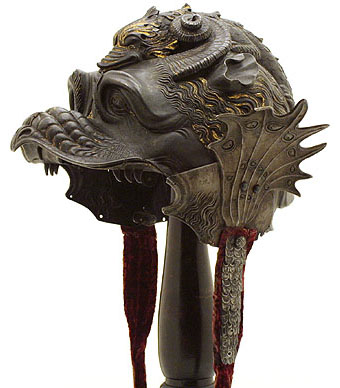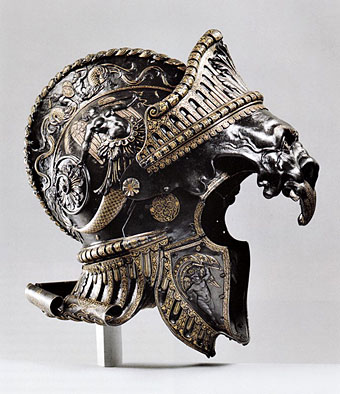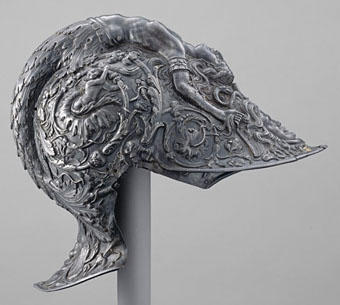
Parade burgonet of Emperor Charles V (1545).
burgonet a. A very light casque, or steel cap, for the use of the infantry, especially pikemen. b. A helmet with a visor, so fitted to the gorget or neck-piece, that the head could be turned without exposing the neck.
Filippo Negroli (c. 1510–1579) was a Renaissance master of ceremonial armour as is evident from these few examples. Fascinating seeing the kind of elaborate grotesquerie more commonly found in engraved prints rendered into wearable three-dimensional form. Burgonet number four can be viewed in detail at the Google Art Project. There’s more of Negroli’s work at Flickr.

Burgonet (c. 1532–35).

Burgonet Alla Romana Antica (no date).
Burgonet (1543).
Previously on { feuilleton }
• Leonardo’s warrior


I’ve long had a thing for ancient ceremonial armor of various cultures, probably ever since the first time I saw Bram Stoker’s Dracula. Often provocative things you see the least of, leave the deepest of impressions, as is the case with how the designer made the briefly seen coachman for that movie appear. I especially like the idea of artist nudes, or in this case artistic partial nudes, preferrably in B&W, posing in this or similar manner of armor. I know I’ve seen other examples, but the only photographer that springs to mind at the moment is Eric Keller- http://www.eric-keller.com/upload/index.php – in the Wunderkammer section of his gallery.
I find the idea of that degree of decoration being wearable very appealing for reasons I can’t quite articulate. I also like the shape of those helmets which remind me of Leonardo’s famous drawing. The surprising thing is that the real helmets are more detailed and fantastic than his sketch.
Eric Keller’s work looks great but then anything with a lot of wings and plumes gets my vote. I’d not come across his work before, thanks for the tip.
Keller’s photos remind me of Jack Smith’s tawdry masquerades. Or a straight version of it.